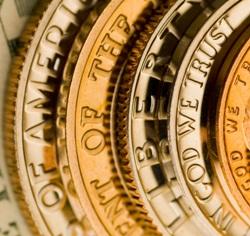Nearly twice as many donors made £1m-plus gifts in last financial year compared to the year before, but the total value of this high-end philanthropy has declined, according to an annual report.
Some 130 donors made a gift worth at least £1m in 2010/2011, up dramatically from the 73 donors which did the same in the previous year. The total number of £1m-plus donations also increased to a record high of 232, beating the previous record of 201 such donations made in the partly-pre-recession period of 2008/2009. This increase in donation numbers marks a turnaround from last year’s Coutts Million Pound Donor report, which had recorded a fall in both donation numbers and the total value of donations.
However, the total value of these £1m-plus donations has continued its downward slide, according to the annual Coutts Million Pound Donor report. The combined value of these donations was £1.241bn in 2010/2011, down from a high of £1.618bn in pre-recession 2005/2006 and £70m below the previous year’s total. While half of the donations made were for more than £2m, the decline in combined value would suggest that there have been fewer exceptionally large donations than in the past.
The Coutts Million Pound Donor report has been running for five years and charts donations worth over £1m made by individuals, trusts and corporations. The report this year found that donations by individuals made up more than half (£763m) of all high-value donations. This year's report, however, shows an increase in philanthropy from corporates, now accounting for 16 per cent of such donations compared with 10 per cent in previous years.
Maya Prabhu, executive director of philanthropy services at Coutts, said that the increased number of donors and donations is “extremely encouraging”.
The report authors suggest that donors are responding to increased demand on charities, with the majority (60 per cent) of the donations going to ‘operational’ charities as opposed to being ‘banked’ in charitable trusts.
Increase in donations to environmental causes
The favoured destinations for these high-value gifts, however, remain the same as in previous years; higher education is the most popular recipient of £1m-plus gifts, followed by culture and then international development. However the report notes that there has been an increase in the number of donations to environmental causes.
Prabhu said the report demonstrated the resilience of donors. “Despite the scepticism suggesting that many large scale donors are simply looking to make the most of tax breaks on offer, our experience, as backed by this report, is that the reality is very different,” she said. “Today the majority of philanthropists are self-made individuals, many of whom have witnessed first-hand the highs and lows of building a business, and on occasion, the possibility of losing everything. It’s a strong desire to make a contribution to the world that has afforded them so many opportunities, while also enriching their own lives, their families and the lives of others that we see as the main driver of their philanthropy.”
The report is produced by Coutts in association with the University of Kent.









